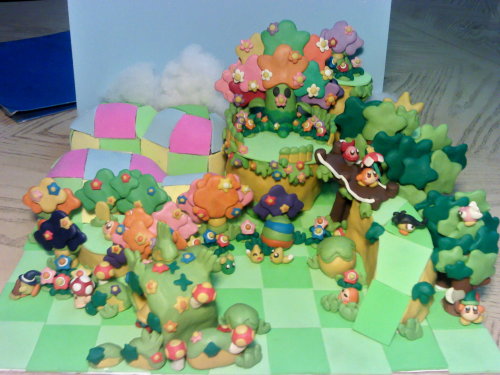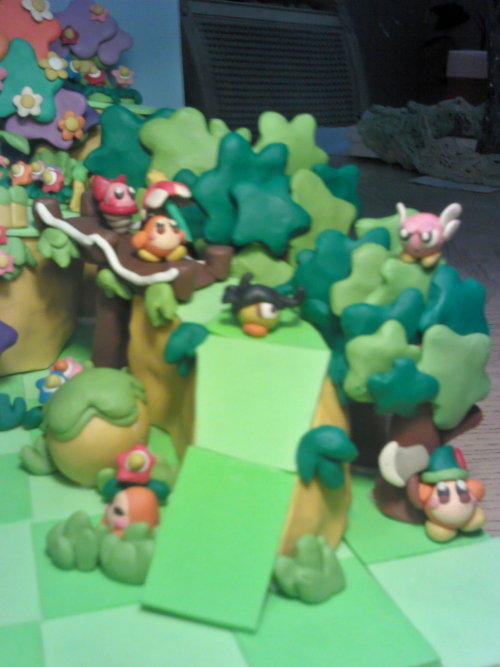#grassland
Day 12! A grassland! Just think of all the voles and crickets that probably maybe live there.
Post link

Moment from a recent Hinterlands painting, pencil, acrylics and ink on paper..
West List Lighthouse / Leuchtturm List-West
#sylt #Germany #Europe #NorthSea #lighthouse #Leuchtturm #landscape #stratocumulus #altocumulus #clouds #blue #phare #island #instamoment #marine #grassland #horizon #partlycloudy #calm #relaxing #light #tower #outdoors #postcard (at List auf Sylt)
Post link
Sheep
#ListaufSylt #Sylt #Germany #Deutschland #schaf #island #europe #wildlife #animals #nature #wool #behh #biking #prairie #mouton #travel #instamoment #schleswigholstein #north #wild #rural #grassland (at List auf Sylt)
Post link
 ALT
ALTMay 2, 2022 - Mountain Elaenia (Elaenia frantzii)
Found from southern Mexico into Colombia and Venezuela, these tyrant flycatchers live in scrubby habitats and forest edges. They feed on insects, spiders, berries, and seeds, plucking food from plants or the ground in short flights. Females build cup-shaped nests from rootlets, mosses, liverworts, lichens, and other materials and incubate the eggs.
 ALT
ALTApril 28, 2022 - Common Tody-Flycatcher or Black-fronted Tody-flycatcher (Todirostrum cinereum)
Found from southern Mexico into central South America, but not in much of Amazonia, these tyrant flycatchers live in gardens, forest clearings and edges, and other open and semi-open habitats. Frequently foraging in pairs or small family groups, they capture their arthropod prey in quick flights or pick it from plants while hovering. They also eat some fruit. Pairs build long pouch-like nests with side entrances in trees from plant fibers, spiderwebs, and other materials. Females incubate clutches of two to three eggs and both parents feed the chicks.
 ALT
ALTApril 24, 2022 - Indian Silverbill or White-throated Munia (Euodice malabarica)
Found in much of South Asia and parts of the Middle East, these estrildid finches have been introduced to other parts of the world, including Taiwan and the Hawaiian Islands. They feed mostly on seeds, foraging on the ground or in grass and other low vegetation, usually in flocks. They build messy, round nests with side entrances from grass in low shrubs or sometimes use the nests of weaver birds. Both parents incubate the eggs.
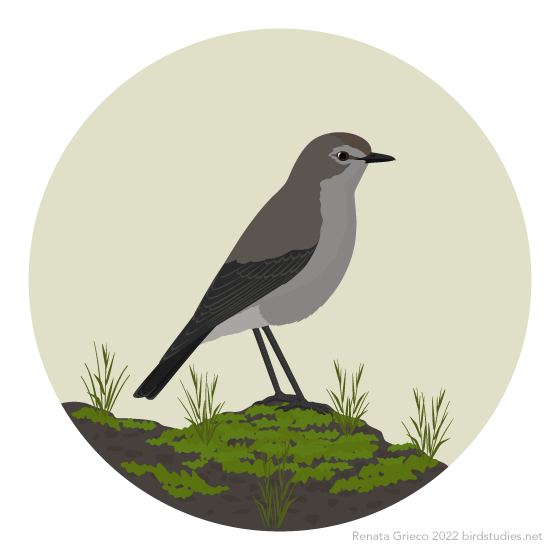 ALT
ALTApril 20, 2022 - Plain-capped Ground-Tyrant or Paramo Ground Tyrant (Muscisaxicola alpinus)
These tyrant flycatchers are found in scrubland, grassland, and other open areas in the Andes in parts of Colombia and Ecuador. They eat insects, standing upright on the ground or a low perch and capturing their prey in short flights. They build nests from grass and roots in cavities or crevices under rocks, where females lay clutches of four eggs.
 ALT
ALTApril 16, 2022 - Great Pampa-Finch or Pampa Finch (Embernagra platensis)
These birds in the tanager family are found in grasslands and marshes in parts of Bolivia, Argentina, Paraguay, Brazil, and Uruguay. Foraging on the ground, they feed on seeds and arthropods. They build cup-shaped nests from dry vegetation, sticks, twigs, and softer materials in grasses or shrubs. Females lay clutches of two to four eggs.
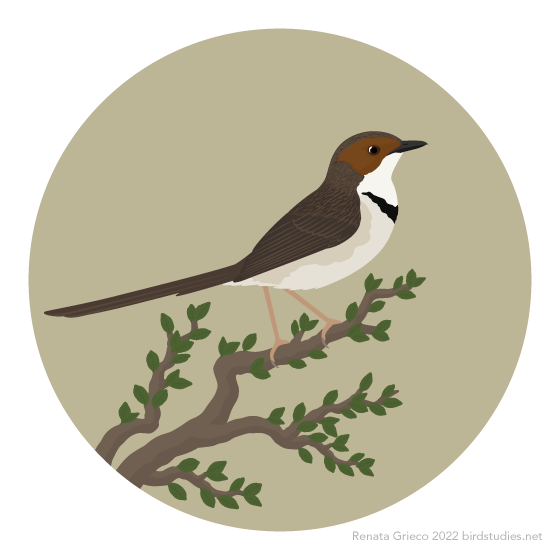 ALT
ALTMay 22, 2022 - Rufous-eared Warbler (Malcorus pectoralis)
Found in southern Africa in parts of South Africa, Namibia, and Botswana, these birds in the cisticola family inhabit dry open shrublands and grasslands. Foraging on the ground or in low shrubs, alone or in pairs, they eat invertebrates, small fruit, and seeds. They build messy oval-shaped nests with side-top entrances from grass, spiderwebs, and plant down in bushes or shrubs. Females lay between two and seven eggs and both parents feed the chicks.
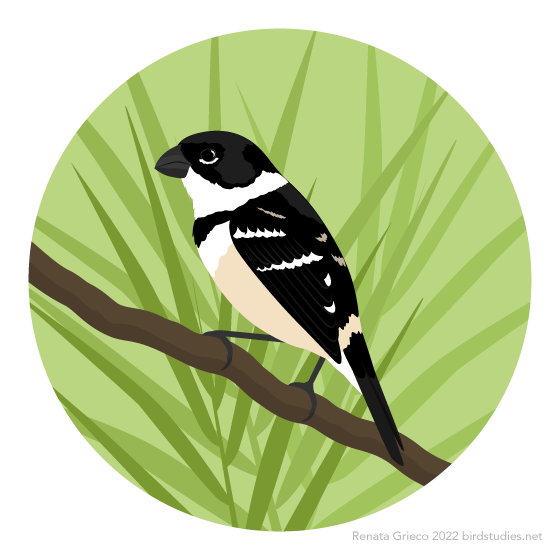 ALT
ALTMay 18, 2022 - Morelet’s Seedeater (Sporophila morelleti)
Found from southern Texas through eastern Mexico to Panama, these seedeaters live in grasslands, savannas, and shrublands. They eat mostly seeds and insects, usually foraging in flocks in low vegetation, or sometimes on the ground, in bushes, or in low trees. Frequently breeding in small colonies, females probably build the small cup-shaped nests from grass, small twigs, rootlets, plant fibers, and other materials in shrubs or large weeds. While females likely incubate the eggs alone, both parents feed the chicks.
 ALT
ALTMay 14, 2022 - Sentinel Rock-Thrush (Monticola explorator)
Found in Eswatini, Lesotho, Mozambique, and South Africa, these Old World flycatchers inhabit grasslands, heathlands, and rocky areas. They eat arthropods, including ants, beetles, and spiders, as well as some fruit and seeds, foraging mostly on the ground. Females build platform nests with cup-shaped cavities in crevices, on ledges, or under rocks or grass tufts, from grass, twigs, and roots. They incubate the eggs alone and do most of the feeding of the chicks. They are classified as Near Threatened by the IUCN, as their population is thought to be declining moderately quickly. Though the current declines have not been explained, they likely face threats from climate change and habitat destruction.
 ALT
ALTMay 10, 2022 - Lesser Shrike-tyrant (Agriornis murinus)
These tyrant flycatchers are found in open plains and dry scrub of southeastern South America. Their diet includes insects, small mammals, lizards, amphibians, and the eggs and chicks of other birds. Breeding in the Patagonian slopes between October and March, they build cup-shaped nests from stems, lining them with grass and feathers.

